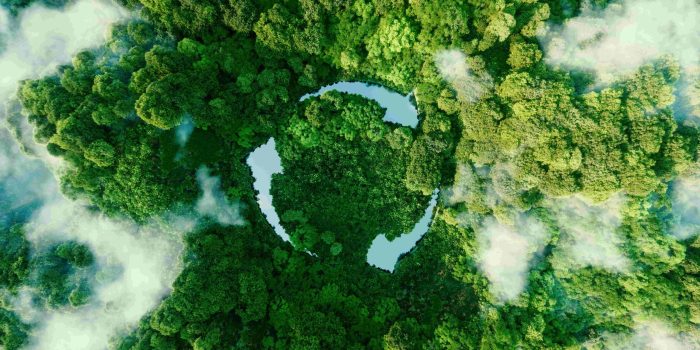Category: Back to the Planet
Project title: Biodiversity and its monitoring in woody crops: a local project with a global impact
Project type: Pilot Project or Feasibility Study
Relevant SDG(s):
- Goal 12: Responsible Consumption and Production
- Goal 13: Climate Action
- Goal 15: Life on Land
Primary topic(s):
- Digital Solutions for Sustainability
- Net Zero Strategies and Scope 3 Emissions
- Nature-positive Solutions and Regenerative Agriculture
- Climate Resilience and Adaptation
- Community Development and Engagement
- Supply Chain Transparency and Traceability
- Sustainable Sourcing and Procurement
Relevant product(s): Almonds
Project end date: December 2024. Duration: 2 years
Location: Spain
Is this a multi-collaborative project? No
ABSTRACT:
Borges integrates biodiversity conservation through environmentally responsible agronomic management. This ambition has led the company to further in its conservation of biodiversity in woody crops through a pilot project on its Mas de Colom estate (Tàrrega), an area of about 70 hectares that alternates productive agricultural land with almond, pistachio, walnut and olive tree plantations, with the natural and semi-natural habitat around it.
The project aims to improve and monitor different groups of biodiversity at farm level and work to make its agronomic activity compatible with the protection and promotion of ecosystems and their environment, while establishing robust and quantitative methodologies to measure progress.
The results are valuable learnings for the entire agricultural sector and in particular for woody crops, especially nuts, where the scheme is being implemented. The implementation of the measures, which are relatively simple (low technical difficulty) and feasible (no particularly high economic costs), can be transferred and provide knowledge to other players in the chain, with the interest of strengthening the sector and generating a positive impact.
The project operational framework is based on three strategic lines of action: the agronomic management of the cultivated area, the management of semi-natural habitats in the uncultivated area and the company’s social dimension. This translates into a project with a three-fold impact: on agricultural activity, on the environment and on the community. For each of these components, specific indicators are evaluated, such as the management of nutrients, soil, plant health products, water, energy, waste, ecological infrastructures and the training of the personnel involved and society in general.
Furthermore, the impact on biodiversity of the practices and management of semi-natural habitats on the estate is assessed by monitoring a selection of measurements in the field.
The project started in year 0 with an initial performance assessment using the Biodiversity Performance Tool, followed by the development of a specific tool to analyze farm sustainability. This tool enabled a Biodiversity Action Plan to be subsequently developed based on actions in the field leading to the project that it is today.
Following the implementation of the first phase of the project, the second phase of the plan was developed in 2024 to assess the results of the implemented actions and to update methodologies to include internationally required means of verification to validate biodiversity monitoring. These groups of methodologies quantify the percentage of improvement for biodiversity across the whole estate, which distinguishes them from other projects focused on environmental conservation.
The six biodiversity measurements that make up this more specific assessment are: landscape, flora, pollinators, soil arthropods, other aerial invertebrates and birds. For correct implementation, the monitoring is done in two time periods and in different agricultural areas of almond, walnut, pistachio and olive trees, establishing monitoring points in each of the evaluated areas and thus giving robustness to the project and its results. Additionally, in implementing and monitoring this project and its actions, the company was advised by local organizations with extensive experience in the field, such as the Global Nature Foundation and Minuartia, working with local players and forging alliances with entities in the sector.
The project’s scalability, its tangible impact on the environment and the professionalization of the implementation make this program a differential asset for our entire sector.
OBJECTIVES:
- Defining an Action Plan that allows economic activity in agricultural systems to be made compatible with maximizing biodiversity benefits.
- Strengthening the supply chain through good practices and sustainable sourcing policies.
- Building healthy and diverse agricultural ecosystems that also provide essential services such as crop pollination, protection against pests and diseases or improved soil fertility, key elements for the mitigation of and adaptation to climate change.
- Adapting methodologies to include processes for verifying and quantifying the percentage of biodiversity in accordance with internationally recognized methodologies.
IMPACT AND OUTCOMES:
Monitoring and assessing biodiversity in agricultural areas is no simple task, but it is essential to measure the impact of agricultural measures and practices implemented at farm level. The implementation of the last phase of the pilot project was Borges’s qualitative leap towards the development of methodologies which, in addition to obtaining robust data on agricultural biodiversity, offer a quantification of the percentage for biodiversity on estates.
Environmental impacts:
- As a result of this project, Mas de Colom has significantly improved its performance in the Responsible Agriculture Tool compared to year 0 levels. The three years of work on sustainability on the estate has resulted in a more balanced spider graph profile, in which practically all the performance areas that make up the sustainability analysis evolved favorably.
- The latest assessment shows a +21% gain in biodiversity compared to the first year. This improvement is the result of the various actions in Mas de Colom as a result of the implementation of the Biodiversity Action Plan.
- Improvements have been seen in Nutrient Management, Energy Efficiency Management and the company’s Social Dimension, with an improvement of 100% implementation for the basic level.
- With the implementation of the Plan, approximately 70% of the land is now covered by vegetation, which means that 70% of the area has a very high potential for biodiversity, whereas before it was a wasteland. This has contributed to achieving not only biodiversity gains but also positive carbon impacts.
- Also, the reduction in tillage and herbicide use on the crop margins and slope surfaces has meant that the margins have been colonized by species of interest that were already in the surroundings, such as wild almond or olive trees. These species are turning the previous wasteland into a niche for biodiversity.
- Specific and measurable indicators have been used, such as diversity and plant species abundance for the quantification of pollinators (%), listening stations for the richness and abundance of bird communities and the number of different plant species and % ground cover for each species in quantifying the flora.
A total of 106 different species of flora, 23 different species of bird life, 33 different genera of pollinators and 22 different genera of invertebrates were found in the productive areas, fallow land and semi-natural vegetation slopes monitored during the 2024 campaign.
Community impacts:
- Obtaining internationally recognized measurements makes it possible to monitor biodiversity with values and parameters that were only previously seen in sectors such as CO2 capture and absorption, providing the community with tools to talk about biodiversity comparatively and without uncertainty. Based on a basket of measurements and this standardization, the project allows a standardized unit of measurement to be calculated for biodiversity expressed as a percentage gain per unit area. This would allow it to be equated with environmental conservation projects that are based on tons of CO2 equivalent sequestered or reduced, and would in turn open the door to funding projects purely in the interest of biodiversity, thus combating the current handicap of ambiguity in the area of biodiversity.
- Mas de Colom also stands out for its informative work, as a place where schools, families and customers enjoy the environment through activities and events and learn about environmental protection initiatives such as that presented in this project. More than 15,000 yearly visits come to the space, generating social value and acting as a loudspeaker towards the territory to transmit the values of healthy eating and environmental preservation that define Borges.
- The project has all the tools to be scaled up to other spheres and thus contributes to building a responsible and sustainable supply chain, with specific and concrete actions for each area of assessment. As a result, a Responsible Sourcing Plan has been developed based on the conclusions and actions drawn from the project.
In what ways is the project innovative?
The added value of this project is the methodology used, the depth and quality of the data, allowing a high level of measurement to be achieved in such an unknown area as biodiversity. This project provides tools to monitor and assess biodiversity in numbers through internationally recognized methodologies.
This biodiversity monitoring using a basket of measurements represents a qualitative advance in measuring the true impact of agricultural practices on biodiversity, thus enabling the gains to be quantified for each crop area (almond, walnut and pistachio) and comparing different types of management.
More information:
- Biodiversity Action Plan Mas de Colom – Casa Borges:



